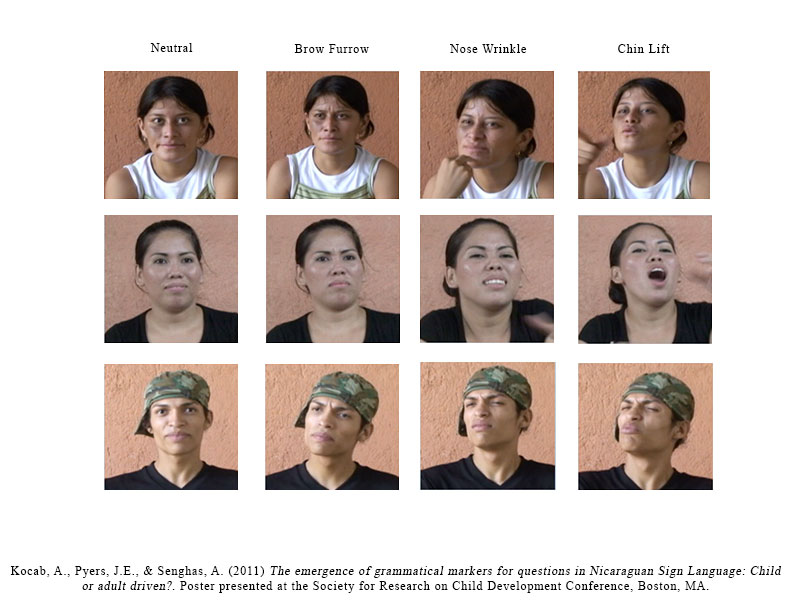

This project is in collaboration with Annemarie Kocab at Harvard University and Jennie Pyers at Wellesley College. Sign languages typically use facial expressions, called nonmanual markers, to convey grammatical information. For example, wh-questions like who, what, when, where, how, and why are typically indicated with a marked eyebrow movement. Prior research has suggested that such nonmanual grammatical markers have their origins in the facial expressions used by speakers of the local spoken language (Janzen & Schaffer, 2002; McClave, 2001).
This project investigates how and when nonmanual markers for questions enter NSL, and how they become conventionalized in their use throughout the community. In particular, we are examining the different roles of adults vs. children in this process. We do this by examining the structure of questions signed by
an older cohort of adults (now in their 40s), who were the first to create NSL when they were children in the 1970s, and comparing them to questions signed by a younger cohort of adults (now in their 30s) who learned the language from them in the 1980s.
So far, our results indicate that there were initially several candidate markers for wh-questions in NSL. The older cohort produces a variety of nonmanual facial gestures with their questions, across a range of features that include the brow, the nose, and the chin. The younger cohort, though they produce more facial gestures overall, appear to be favoring some of these features over others. Interestingly, the markers that are the most frequent in the input to the younger signers are not necessarily the favored ones. The variability in the type of facial gestures produced suggests that systematization of this particular convention is still underway.
